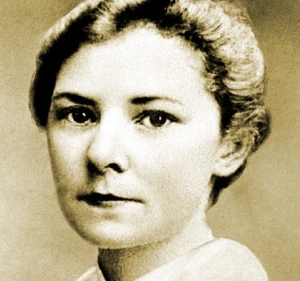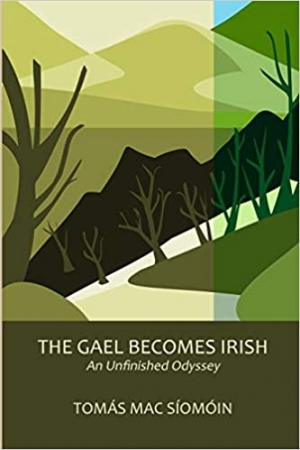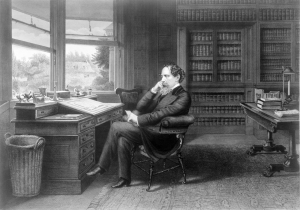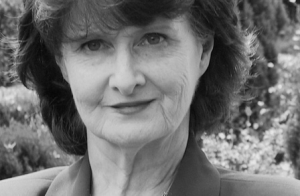
The Gadfly: An Irishwoman’s novel about revolutionaries
Jenny Farrell remembers Ethel Voynich, who died 60 years ago this month, and who wrote The Gadfly – An Irishwoman’s novel about revolutionaries
Liam Mellows read this novel of revolution while awaiting his execution, along with the other condemned and his comrades. He had been imprisoned by the Irish Free State in the civil war (1922-23), for opposing the Treaty, which gave Ireland Dominion status within the British Empire, rather than establish an independent Irish Republic. Fellow prisoner Peadar O’Donnell writes:
It is a curious fact, which many of the Mountjoy prisoners must be easily able to recall, that it was around the days that the Gadfly was being widely read in ‘C’ wing; it is a tale of Italian revolution with a ghastly execution scene. (…) MacKelvey … picking up the Gadfly … saying once more: ‘God, I hope they don’t mess up any of our lads this way.’ MacKelvey was to remember the Gadfly next morning.
What was this book so widely read, by Republicans in Ireland and the Labour movement in Britain?
The novel was published in New York in 1897 and a few months later in London, two years after its completion. It achieved cult status in the USSR and China, selling millions of copies. Two film versions were made in the USSR, one silent (1928), the other (1955) with a score by Dmitri Shostakovich. Its author, Irish-born Ethel Voynich, was closely associated with revolutionary circles in London, Berlin and Russia.
Ethel Lilian Boole was born on 11 May 1864 in Co. Cork, the youngest of five daughters of the renowned mathematician Professor George Boole and Mary Boole, who was a psychologist and philosopher. Ethel’s father died shortly after her birth and her mother took the family to London, returning to Ireland regularly during her childhood. It was on one of these visits to Ireland that Ethel first read about Giuseppe Mazzini, leader of the Italian Risorgimento movement.
Aged 18, she went to study music in Berlin for three years (1882–85). Here, she met Russian revolutionaries and when she returned to London, she learnt Russian from the exiled revolutionary Stepniak (Sergei Kravchinski) who had fled Russia after assassinating the chief of the Czarist secret police. Later, she travelled in Russia, staying with Stepniak’s sister-in-law Preskovia Karauloff in St Petersburg for two years (1887–89).
Preskovia was a doctor, whose husband was a political prisoner. Ethel helped Preskovia treat impoverished peasants. She also gave music lessons and associated with families of political prisoners whom she met through Preskovia.
Back in London, Ethel met a Polish political exile, recently escaped from Siberia, who anglicised his name to Wilfred Michael Voynich. Transported to Siberia for participation in the Polish liberation movement against the Czarist regime, he escaped to England in 1890. Ethel and Wilfred worked together with Stepniak, printing revolutionary literature and banned books including translations of Marx’s and Engels’ writing, and smuggling them into Russia.
Along with other revolutionaries, they founded the Russian Free Press Fund, and Ethel herself undertook a clandestine jouney to L’Vov in the Ukraine to organise the smuggling of illegal publications into Russia. Involved in these Russian émigré circles was another Russian exile and agent, Sigmund Rosenblum, alias Sidney Reilly, executed in 1925 for his role in a coup d'etat against Lenin and the USSR. Legend has it that he and Ethel had an affair in Italy.
From these experiences and circle of comrades, Voynich drew the events and characters in the novel. It is set in 1840s Italy at the time of the Risorgimento, its popular rebellion against Austrian domination.
The novel’s main characters belong to Mazzini’s underground party, Young Italy, active in the national liberation movement. A thrilling plot roots the reader’s sympathy with the author’s. It is understandable how this book captures the imagination of readers who sympathise with movements against oppression and domination, with such sentences as:
Several of them belonged to the Mazzinian party and would have been satisfied with nothing less than a democratic Republic and a United Italy.
It is obvious why the Anti-Treaty prisoners, captured during the civil war in Ireland, identified with the characters in the book.
This domination was not merely exercised by a foreign power. Reflecting historical fact, the novel criticises sharply the Catholic Church’s active opposition to the movement for a united Italy, expressed in a father and son conflict that deepens the import: an Italian reluctantly willing to sacrifice his son and the cause of freedom, and Italy’s future, for the sake of religion. The author leaves no doubt regarding her own stance. In fact, the novel’s declared atheism must have contributed to its being banned by the Irish State in 1947.
The spirit of revolution is not limited to members of the Young Italy movement. It has covert support throughout the population, evidenced in many scenes in the novel. Ordinary people help the movement smuggle arms across borders and come to their personal aid – even prison warders back them. In fact in the scene referred to by MacKelvey, the firing squad try to protect their secret hero. So, at the end of the 19th century, we see a new type evolving within the English novel, one whose hero and heroine are revolutionaries and part of a revolutionary liberation movement.
Written at a time of international suffrage movements, the central female character, Gemma Warren, is a woman the movement respects highly. She is inspired not only by Voynich’s own experience but also by other women revolutionaries around the author. Gemma is not merely an emancipated woman; she is also a revolutionary woman, at the centre of the movement. In this way, she goes beyond the literary heroines of the late 19th century and anticipates the proletarian women Gorky would write about:
Those who saw her only at her political work regarded her as a trained and disciplined conspirator, trustworthy, courageous, in every way a valuable member of the party, but somehow lacking in life and individuality. ‘She’s a born conspirator, worth any dozen of us; and she is nothing more,’ Galli had said of her.
Voynich brings not only the revolutionary group into the centre of the plot, but as a necessary part of this group, a new type of woman.
Given Voynich’s internationalism and experience, it is bewildering to find racist sentiments towards South Americans and black people expressed in this book. This racism also affects the portrayal of women of colour, as readers will discover. It seems that Voynich’s novel did not find much resonance in Cuba and other Latin American countries, nor in Africa, all waging heroic liberation struggles. Surprisingly, critics have not drawn attention to this aspect. Instead, if they dislike it, it is either due to its unashamed atheism, so unusual for its time, or for its partisanship for a revolutionary movement.
Before the outbreak of the First World War, Wilfred Voynich became involved in the Society of Friends of Russian Freedom. He ran a rare bookshop in Soho, which he also used for money laundering and smuggling revolutionary and Marxist literature into Russia. Again, Ethel frequently worked as a courier for the organisation.
Ethel began writing full time, authoring three more novels: Jack Raymond (1901), Olive Latham (1904) and An Interrupted Friendship (1910). She also translated some poetry by Shevchenko and Lermontov into English, published in 1911.
She worked with the Quakers as a social worker in London’s East End during the War, and left Britain for good around 1920, when she joined Wilfred in New York. There is no further information about active political work. Wilfred died in 1930. Ethel returned to music, composed musical works including the ‘Epitaph in Ballad Form’, dedicated to the Irish revolutionary Roger Casement, who was hanged in Pentonville Prison, London, on 3 August 1916. She also translated Chopin’s letters into English. She wrote some further novels, although none of them achieved the quality or the fame of The Gadfly.
Soviet literati in 1955 discovered that Ethel was still alive in New York, aged 91. This caused an enormous sensation in the USSR and resulted in the payment of royalties. Ethel continued to live quietly with her companion, Anne Nill, who had once managed Wilfred’s New York book business. They lived together for thirty years in the heart of Manhattan, in an apartment at London Terrace on West 24th Street.
Ethel Voynich died sixty years ago, on July 27th, 1960, aged 96.














